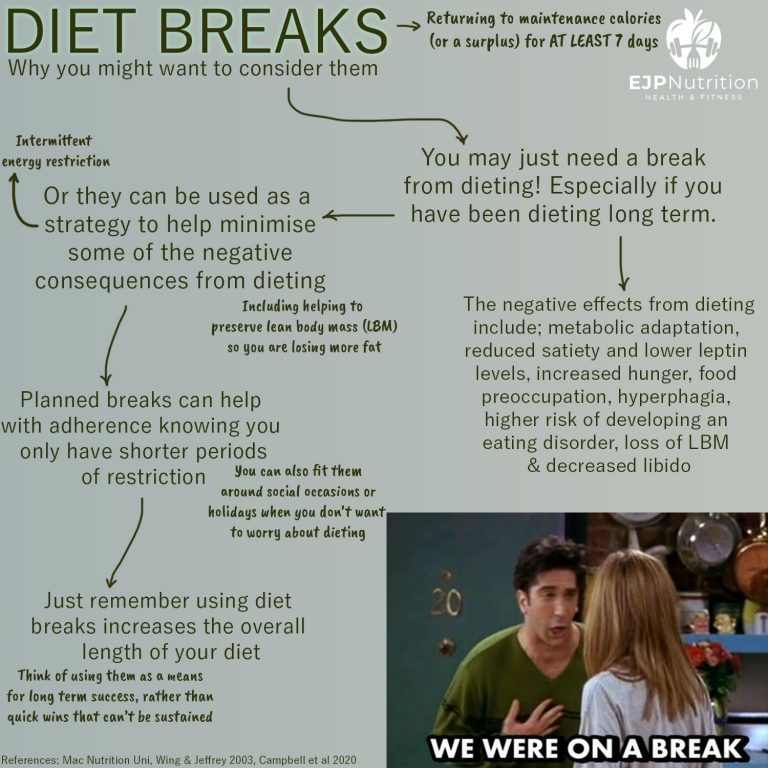There are a few reasons to consider diet breaks. One is simply because you need to stop dieting! Maybe for a few weeks, or a few months+ for some. The second is as a strategy to break up a dieting phase.
Long term dieting has many negative effects. These include physiological, such as metabolic adaptation and the loss of LBM, psychological, such as food preoccupation and the potential for binging and reductions in performance, such as losing strength or low energy.
Diet breaks try to minimise the negatives caused by dieting. They can also be used as a chance for you to practice living at maintenance. Not enough emphasis is put on how to live at a stable weight, or what to do after a diet. Which is why weight regain is so common.
So what is a diet break? It’s when you return to your maintenance calories, for a week or longer. Or you could go up to a small surplus if preferred. To clarify maintenance calories will be your current level when your weight remains stable and doesn’t increase or decrease.
This is still quite a new area of research so we don’t have loads on the subject yet. As well as diet breaks you have diet refeeds too, which are usually a shorter period of time (maybe 1-3 days). On each the “extra” calories should primarily come from carbs, which will increase leptin. Leptin helps regulate energy homeostasis, neuroendocrine function, and metabolism.
On the social side, diet breaks are a much more lifestyle friendly option than constant dieting. You can plan then around social occasions or holidays. The break from dieting will also help psychologically, and going back to maintenance should improve training.
On that point when we diet it’s with the aim to lose as much fat as possible, while retaining muscle. The new study from Campbell et al found that interrupting a continued energy restriction helped preserve fat free mass.
References: Mac Nutrition Uni, Campbell et al 2020, Weigle et al 2003, Dirlewanger et al 2000, Wing & Jeffrey 2003, Kelesidis et al 2010
(Reposted from Instagram)


